
TwinSpace
The TwinSpace project aims to optimize (security-relevant) software for
embedded systems in terms of resource requirements (e.g. CPU, GPU,
runtime). For this purpose, an automated reverse engineering
of compiled code is aimed at. This code is then simulated on
different emulated hardware (HW) platforms and the
resource requirements are measured. Once the appropriate HW platform
is selected, the code is recompiled
for the corresponding HW platform. Traditionally, resource optimization for software (SW)
is ignored, as the speed of HW doubles every two years
anyway. By means of the developed, tested and applied
green coding development tool with optimized resource
management - TwinSpace - the SW development in the (security-
relevant) mass business of embedded systems is to be revolutionized
. Both economic aspects, e.g. through
more efficient development processes, and ecological aspects
through increased energy efficiency or CO2 savings through
smaller chip areas are optimized. The contributions of ISSE are outlined in three aspects:
- Process modeling for the new processes created by TwinSpace.
- Management concept for process execution and artifacts in TwinSpace.
- Evaluation concept for process artifacts in TwinSpace.
Contact person: Dr. Mohammad Abboush
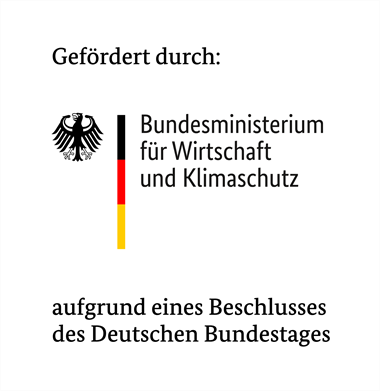
DGT: Digitized Green Tech
6RLogistics
With the Climate Protection Act adopted in 2021, Germany has committed to
tightening climate protection targets.[1] The promotion of the
circular economy is a fundamental building block in this regard and enables
active waste prevention and reuse as well as the recovery
of materials through recycling.[2] In this sense,
waste electrical and electronic equipment (WEEE) offers great potential, as a growing
volume is expected in the coming years and the products are often suitable for reuse and repair due to
their design.[3]
In 2018 alone, 10.3 kg per person was disposed of in Germany, which puts
Germany above the EU average.[4] At the same time,
WEEE is still being disposed of improperly in household waste, which in turn makes proper
reuse and recycling impossible.[5] The 6RLogistics project addresses this problem and uses artificial intelligence
and smart logistics to help with recycling decisions, transportation and disposal. The artificial intelligence records the condition of the
product at the user's premises and selects the appropriate use based on this. The product is then transported from the user to the recyclers. There is therefore a pull effect by the recyclers, in which the idea of the "storage room" is used as a decentralized warehouse for goods and spare parts
. This not only increases the collection rate of WEEE, but also the reuse and recycling rates of the appliances, thus making an active contribution to climate targets by reducingCO2 emissions and saving energy and resources. As part of the project, the aspects of such a system will be tested at various levels in three different use cases and the subsystems tested. The return to end users and collection points will be investigated, as well as detection and evaluation in an industrial context. As part of the project, new systems for goods logistics and the reuse of goods will be tested, which will help to advance the circular economy.
PROJECT PARTNERS: eds-r GmbH (Nuremberg), ceconsoft GmbH (Goslar), Arbeitskreis Recycling e.V. (Herford) and Meikowe Elektro- und Teleservice GmbH (Fleringen).
Contact:
E-Mail:Mohammed Fahad Ali
[1]www.bundesregierung.de/breg-de/schwerpunkte/klimaschutz/klimaschutzgesetz-2021-1913672
[2] Waste prevention, Federal Environment Agency, www.umweltbundesamt.de/themen/abfall-ressourcen/abfallwirtschaft/abfallvermeidung
[3]www.europarl.europa.eu/topics/de/article/20201208STO93325/elektroschrott-in-der-eu-zahlen-und-fakten-infografik
[4]www.destatis.de/DE/Presse/Pressemitteilungen/Zahl-der-Woche/2021/PD21_11_p002.html
[5]deutsche-recycling.de/blog/e-schrott-elektroaltgeraete-recycling/
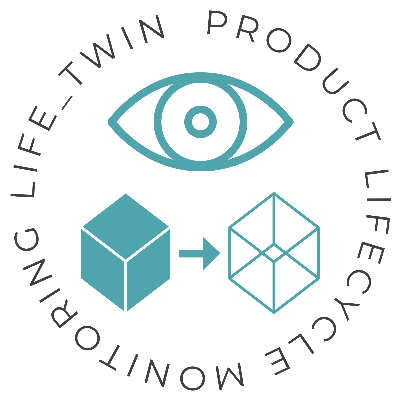

Life_Twin
The electronic products currently in use are only designed for short-lived usage cycles and are one of the causes of the current increase in global waste volumes and the excessive use of raw materials.[1] As a result, electrical and electronic products generate emissions that can be reduced through repair and reuse. However, emissions are also generated during the storage, sale and disposal of appliances. Especially with regard to global warming, these emissions represent a great potential for reduction. The aim of the project Life_TWIN project is to investigate smart solutions for determining the condition of appliances and to identify opportunities for reuse, thereby reducingCO2 emissions. The project, which is part of the "Resource efficiency in the context of the energy transition" funding line within the 7th non-nuclear funding program of the Federal Ministry of Economics and Climate Protection (BMWK), is thus in direct line with other research projects to pave the way for the circular economy. Research into solutions to improve the condition monitoring of products plays a central role in this, as it enables damage and material fatigue in products to be detected. Digital twins are to be used in the project to enable the condition of products to be recorded and controlled.
PROJECT PARTNERS: IMW TU Clausthal, Bernhard Olbrich Elektroinstallationen-Industrieanlagen GmbH, Robert Bosch GmbH, Hellmann Process Management GmbH & Co KG
Contact:
E-Mail: Dominique Briechle
[1] V. Forti, C. P. Balde, R. Kuehr, and G. Bel, "The Global E-waste Monitor 2020: Quantities, flows and the circular economy potential," 2020.
HitchHikeBox
In addition to the environmental and health damage caused by emissions such as noise, CO2 and air pollutants, the quality of life is also increasingly restricted by road traffic due to the high land consumption (e.g. for roads, parking lots, loading and unloading areas). The situation has become even worse in recent years with the continuing growth in traffic, especially commercial logistics traffic. The development of technical, urban planning and social concepts to satisfy the mobility and logistics needs of society while at the same time increasing environmental protection and urban quality of life is THE challenge of the next decade.
The HitchHikeBox project aims to develop an intermodal hitchhiking logistics system based on AI-based route planning for self-organizing delivery boxes. It is a technological platform for an integrated electric mobility and logistics system that enables a reduction in private and commercial trips while maintaining mobility and logistics and reducing the need for parking by maximizing the efficiency of current vehicles without compromising flexibility. The main innovation of the project is an automated, decentralized dispatching system for self-organized "smart" logistics boxes (HitchHikeBox) that enable intermodal multi-hop routing by "hitchhiking" via local micro-hub depots. In addition, the participating regional vehicle operators are to make greater use of fully electric vehicles and exploit synergy effects by bundling coordinated individual journeys. The Institute for Systems and Software Engineering (ISSE) is developing a software solution for the "intelligent" reusable logistics box, which can hitchhike independently and automatically from a starting point to its destination. This solution will have intelligent strategies for carrying out a transportation task. Also the development and design of this dynamic-adaptive self-organizing system based on smart contracts.
PROJECT PARTNERS: MoD Holding GmbH, TU Clausthal (Institute for Software and Systems Engineering), Institute for Enterprise Systems (InES) University of Mannheim, Brehmer GmbH & Co KG, PrimingCloud GmbH, Blockchain Solutions GmbH, Overath GmbH
Contact person:
E-Mail: Marit Briechle-Mathiszig
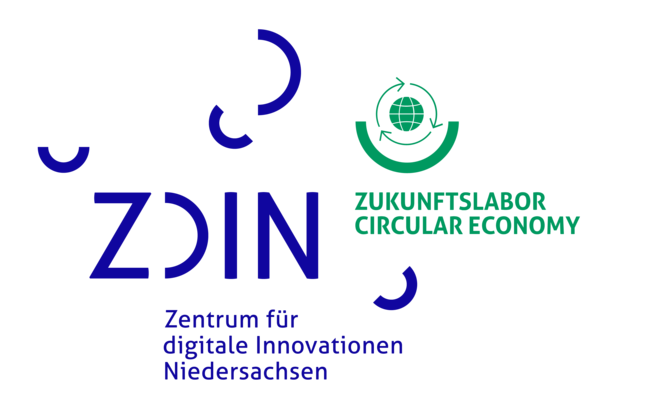

Future lab Circular Economy
In view of the increasing global consumption of resources and the finite nature of resources, industrial production in Lower Saxony, as well as worldwide, faces the challenge of overcoming the linear economy. This is essential in order to reduce greenhouse gas emissions and protect the ecosystem. Digitalization plays a crucial role in overcoming these challenges, as it enables and drives comprehensive change in the economy and society.
The overarching theme of the ZL-DCE is to promote the transformation of society and the economy towards a digitized circular economy. This is achieved through the networking of digital and AI-supported circular service product and (retro) production systems. Real-world laboratories are used to test the approaches in a real environment with practice partners and users from society, using existing infrastructures such as intelligent collection and sharing stations, dismantling robots and repair services. Research and testing in the real-world laboratories stimulate new research impulses and contribute to the development of an open data pool that provides valuable input for AI-based approaches. By linking digitalization and the circular economy, sustainable, digital business models are promoted that contribute to an efficient and resource-conserving economy.
Funded by zukunft.niedersachsen, the joint science funding program of the Lower Saxony Ministry of Science and Culture and the Volkswagen Foundation
PROJECT PARTNERS: Clausthal University of Technology (IMW), Carl von Ossietzky University Oldenburg (VLBA), Fraunhofer Institute for Surface Engineering and Thin Films, Leibniz University Hannover (match) , OFFIS Institute for Information Technology (R&D) , Ostfalia University of Applied Sciences (IKAM & IVS), Braunschweig University of Technology (IWF & AIP)
Contact:
E-Mail: Dominique Briechle
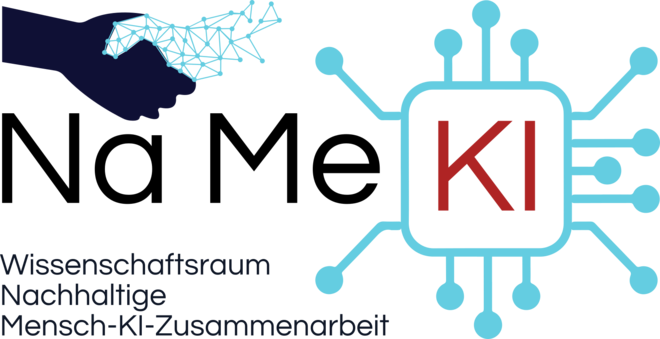

Sustainable human-AI collaboration (NaMeKI)
Germany is ageing, which is increasing the need for outpatient care and rehabilitation services. At the same time, there is a significant shortage of skilled workers in these areas, which is expected to grow to almost 500,000 care workers by 2035, according to IW Köln. One promising solution is the use of assistance technologies. Studies show that collaboration between humans and robots is not only possible, but also improves efficiency and precision in many areas of work. The previously strict separation of human activities and robot actions, for example in industry, is changing towards close collaboration: robots provide active support by passing tools or holding objects. This flexible teamwork increases productivity and safety with less strain. Robots offer great potential to mitigate the shortage of skilled workers, particularly in body-related services such as care and therapy. In addition to technical and ethical issues relating to human-AI collaboration, these areas of application will be the focus of further research.
The Science Space Sustainable Human-AI Collaboration is funded by zukunft.niedersachsen, a funding program of the Lower Saxony Ministry of Science and Culture and the Volkswagen Foundation.
PROJECT PARTNERS: Clausthal University of Technology, Georg August University Göttingen, University Medical Center Göttingen, University of Applied Sciences and Arts
Contact:
E-Mail:Tobias Geger
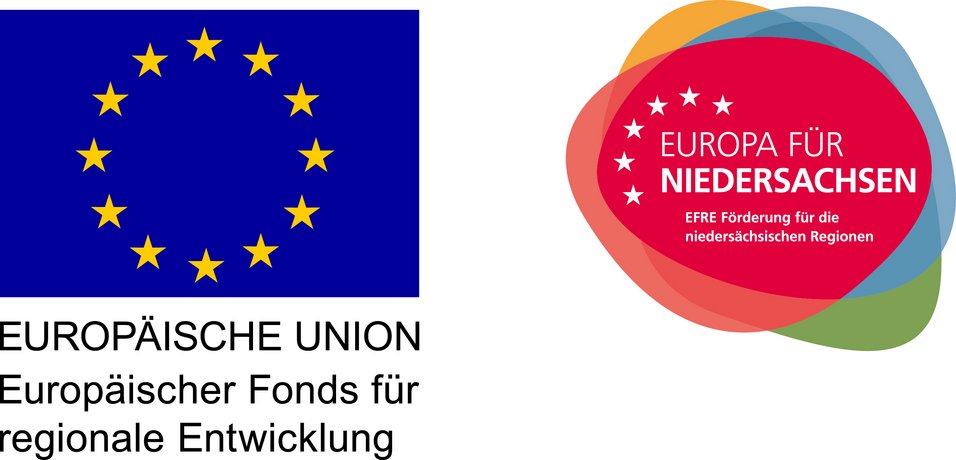
DACS: Dependable and Autonomous Cyber-Physical Systems
VEAL - Virtual development and evaluation of the acceptance of automated level 4 vehicle concepts
The VEAL joint project focuses on the development and evaluation of user acceptance of automated level 4 vehicle concepts, both in virtual simulation environments and on real test vehicles. The Institute of Software and Systems Engineering (ISSE) is responsible for the sub-project at Clausthal University of Technology, which focuses on the development of a user-oriented end-to-end learning driving function for autonomous, fault-tolerant (fail-operational) systems. This driving function will be integrated into a comprehensive fail-operational safety architecture.
In order to achieve these comprehensive objectives in the sub-project, several work objectives were defined:
- Design of a comprehensive fail-operational safety architecture.
- Design of a user-oriented, AI-based end-to-end learning driving function for autonomous systems.
- Implementation on a development and simulation platform.
- Establishment of a development process for the user-oriented, AI-based end-to-end learning driving function as a blueprint.
Contact:
E-Mail: Dr. Meng Zhang

GESAL: Holistic development guidelines for a feasible safety and automation concept for agricultural machinery
The main unique selling point of the GESAL project is the first-time creation of a development blueprint that includes a holistic and feasible automation concept with explicit safety considerations for agricultural machinery in the areas of hardware, software and process safety as well as governance. By overcoming development hurdles faced by regional companies, this ensures a high degree of usability of the project results.
In the sub-project "C - Software security in automated agricultural machinery" of the GESAL project, the Institute for Software and Systems Engineering (ISSE) at Clausthal University of Technology will develop a security concept for automated agricultural machinery using software solutions. To this end, ISSE will design an overall fail-operational system architecture consisting of software components and their interfaces, as well as a middleware solution for automated agricultural machinery. In addition, the defined software components will be mapped to a hardware architecture to be developed in sub-project A. The environment sensor architecture from sub-project "A - Hardware safety in automated agricultural machinery" will be taken into account. The existing architectural approaches and the expertise for the realization of fail-operational measures for automated driving functions of the SAE L4+ level from the automotive sector are transferred to the agricultural application area in this sub-project.
Contact:
E-Mail: Dr. Meng Zhang
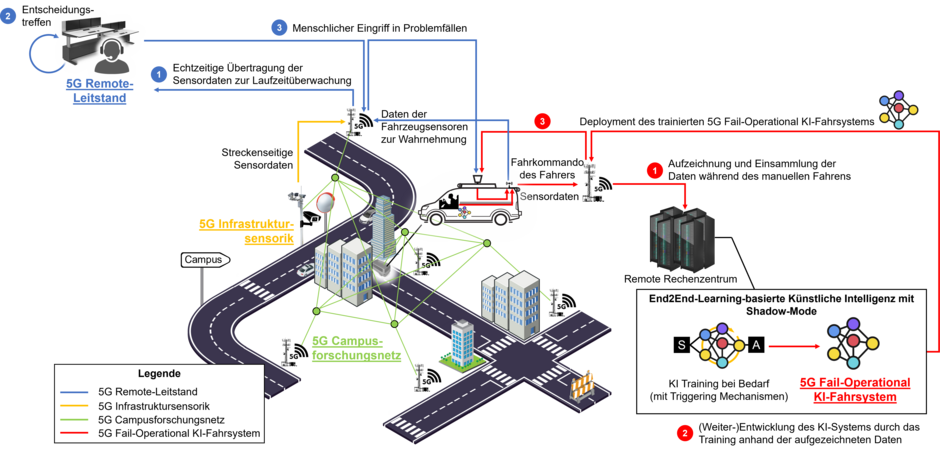
5GCampusKIShuttle
The new 5G communication standard plays a crucial role for innovative applications, especially in the field of autonomous driving. This project aims to establish a 5G campus research network to meet the requirements of autonomous driving at level 3-5 without a safety driver on board and instead with a remote technical supervision (control center). According to the German law on autonomous driving, which came into force on July 28, 2021, the possibility has been created for the first time to implement autonomous driving at level 3 without a safety driver and with remote supervision (in the sense of a 5G remote control center in the project) in regular operation. For this 5G remote control center, a 5G network must be established that extends the required safety and security properties of the 5G radio standard in order to predict the quality of the radio network during teleoperation and protect the network from attacks.
In addition, autonomous vehicles should be able to cope with complex driving environments, such as intersections with poor visibility. 5G infra-structure sensor technology can support this by providing a replacement for the analog traffic mirror used by human drivers. Finally, a reliable AI-based driving system (5G fail-operational) with shadow mode must be developed and connected via 5G with the 5G infrastructure sensor technology and the 5G remote control center to form an integrated 5G-based mobility and logistics service system. An autonomous campus shuttle will be set up as a demonstration operation. The 5G campus research network will be used as a platform and test field for current and future research projects and will be available to the participating institutes and centers. The project results can serve as a model for the construction of autonomous shuttles in other 5G real-world laboratories and areas with 5G network coverage. The project was presented at the fourth advisory board meeting of the joint 5G real-world laboratory project in the Braunschweig-Wolfsburg mobility region and received unanimous positive support. This shows the excellent integration of the project into the 5G innovation region Braunschweig-Wolfsburg.
Contact:
E-Mail: Dr. Meng Zhang
Future lab mobility
The project to establish a Future Mobility Laboratory focuses on application-oriented research work on the use of technologies. In four interdisciplinary fields (Collaborative Research Fields (CRF 1-4)), research is to be conducted into the potential for realizing environmentally and socially compatible mobility solutions by networking systems, users and infrastructure through digitalization. The research is geared towards concrete (Lower Saxony) use cases of future mobility and is intended to produce methods and approaches for the rapid transfer of innovative mobility solutions.
As part of the overall project, TU Clausthal is working with the project partners in CRF 2. Data is the basis for automated driving (CRF 1) and a prerequisite for the development and implementation of suitable services and business models (CRF 4). Scientists from the fields of communication technology, information engineering and software engineering are involved in CRF 2 in order to research methods for the secure collection, evaluation and fusion of mobility data. Methods for the secure and reliable (in terms of safety, security and privacy) collection and processing of data and the fulfillment of legal framework conditions (e.g. GDPR) in all development and operational phases are to be developed and demonstrated. Approaches for the development of secure data architectures as well as methods and approaches for the standardization of data handling and fusion and the assessment and assurance of data quality are to be tested.
Contact:
E-Mail: Abhishek Buragohain
InsectPassport
Project website: Link
By 2050, the world population will grow to 9.7 billion people. Insects as an alternative animal feed are a key to solving the problem of increasing protein demand. To date, insect protein has mainly been produced by large companies in Western countries, although breeding already takes place in small facilities in third countries. The InsectPassport project aims to increase transparency in the insect industry and develop a digital product passport to improve the acceptance of insect proteins from third countries. This will lead to an increased supply of insect meal in Europe, which will contribute to a price reduction for end customers. Our project promotes sustainability and profitability in equal measure.
Contact:
Prof. Dr. Benjamin Leiding benjamin.leiding@tu-clausthal.de
BIOMetrix
Project website: Link
The aim of the BIOMetrix project is to develop a recommendation and evaluation system for biodiversity measurement measures using scientifically proven AI biodiversity measurement methods (e.g. audio AI, AI image recognition) for customer-centric productization with the aim of providing optimized measures for species protection and/or ecological risk management for companies and government institutions. As part of the DATIpilot Innovation Sprint, a prototype implementation of the concept for at least one, ideally several use cases including a successful pilot for measuring biodiversity in a defined test scenario will be carried out. For this purpose, existing data sources and AI models are supplemented with self-collected data from multi-sensor systems and further AI models are developed. In terms of content, we will work with future users (e.g. renaturation projects, national parks and nature reserves, urban wildlife areas, landscape conservation areas, compensation area owners, the agricultural sector, etc.) who want to/must carry out biodiversity measurements and assessments as part of species protection or risk management measures in the development and piloting. In addition, the first steps towards scaling and commercialization of the system are being taken with the aim of a subsequent spin-off.
Contact:
Prof. Dr. Benjamin Leiding benjamin.leiding@tu-clausthal.de
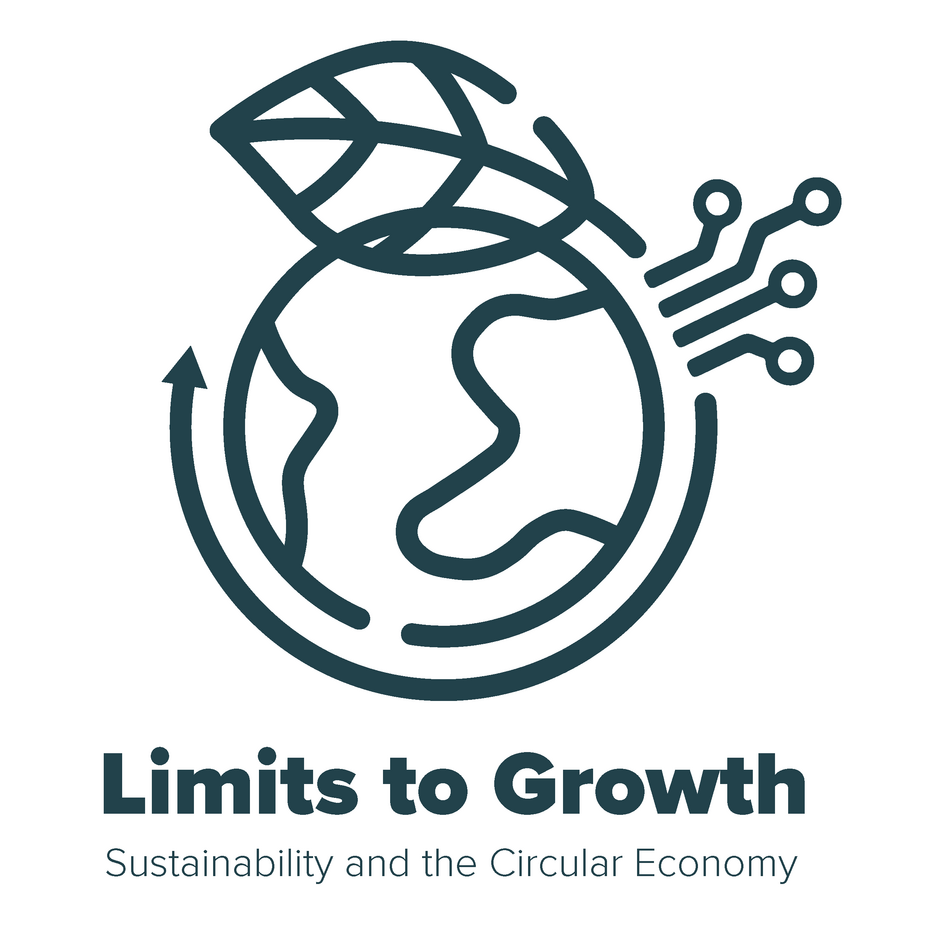
The Limits to Growth - Sustainability and the Circular Economy (MOOC)
Project website: Link
As part of its Future Concept 2030, Clausthal University of Technology has committed itself to the key topic of the circular economy. While degree-specific courses deal with selective aspects of the circular economy, there is a lack of a university-wide basic course for all students that teaches the essential concepts and basics of sustainability, environmental pollution, resource scarcity and the circular economy.
Since the Limits to Growth (LTG) course is open to all students at Clausthal University of Technology - and in the future also to other universities, e.g. Georg August University from SS2023 as part of the university-wide soft skills modules or Ostfalia University as part of the joint Digital Technologies degree program - an adapted teaching format and appropriate technical support is required. The plan is to implement the LTG course as a Massive Open Online Course (MOOC), which scales traditional forms of knowledge transfer (slides, recordings, etc.) via an IT-driven infrastructure and adds further technical features such as forums, quizzes and other forms of (semi-) automated tasks or tasks to be assessed via peer feedback. In addition, corresponding MOOC platforms offer participants interaction and networking opportunities as well as the possibility of asynchronous learning, in which students study according to their own schedule. They are given access to all teaching and learning materials, which are discussed in regular meetings - followed by optional question-and-answer sessions to clarify any questions. All teaching and learning materials, recordings, homework, tutorials, etc. are published under an open source license (CC-BY-SA-4.0) and are therefore freely available as teaching units that can be directly integrated or as a basis for further courses.
Contact:
Prof. Dr. Benjamin Leiding benjamin.leiding@tu-clausthal.de
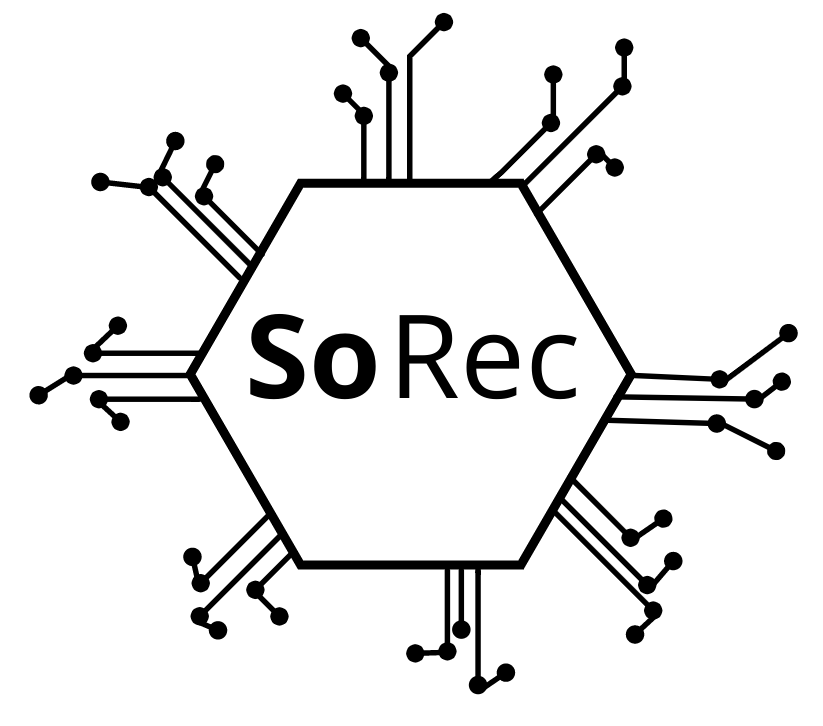
SoRec - Digitization of sorting processes for fine-grained, metal-containing material flows in the recycling industry
Project website: https://www.sorec-greentech.de/
Closing material and substance cycles is an integral part of the circular economy. Many products (especially electronic devices) are becoming increasingly complex in terms of their structure and the raw materials used. In order to recover raw materials, the material flows have to be shredded into ever finer grain sizes. As a rule, dry sorting processes in the fine particle size range achieve good sorting results with lower throughputs. From a certain increase in throughput, the quality of the sorting results decreases significantly. In order to work economically, sorting machines are operated as close as possible to the "tipping point" between good quality and maximum throughput, and downtimes are reduced through regular maintenance. Fluctuations in throughput lead to the optimum operating point being undershot or exceeded, and in the worst case scenario, the fractions produced have to be costly re-sorted.
The SoRec project is dedicated to the digitalization of sorting processes for fine-grained, metal-containing material flows in the recycling industry. By installing optical detection systems, the sorting process is monitored and data such as mass throughput, particle size and impurities are obtained. This data is used to regulate and control the sorting process. In addition, they are combined with other machine parameters and sensors to create a comprehensive data image in the form of a digital twin. In this way, sorting and recycling systems can be operated semi-automatically and with minimal manpower. Economic benefits result from the maximized throughput of the system, reduced downtimes and higher sorting quality. From a circular economy perspective, the recovery rate of already extracted raw materials for circular use and the closing of material and substance cycles increases.
Contact:
Prof. Dr. Benjamin Leiding benjamin.leiding@tu-clausthal.de
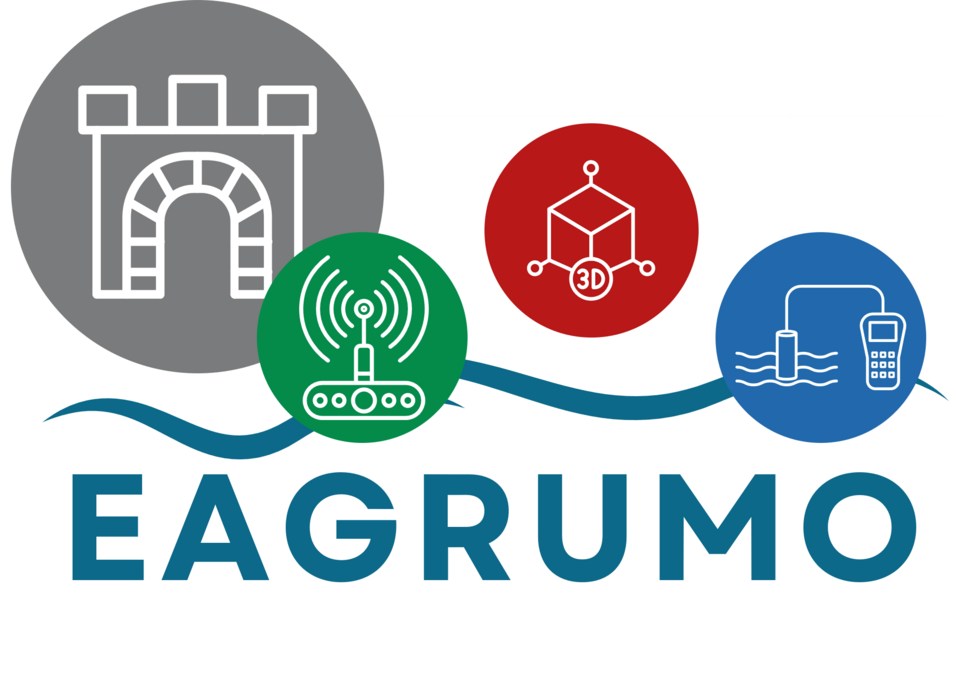
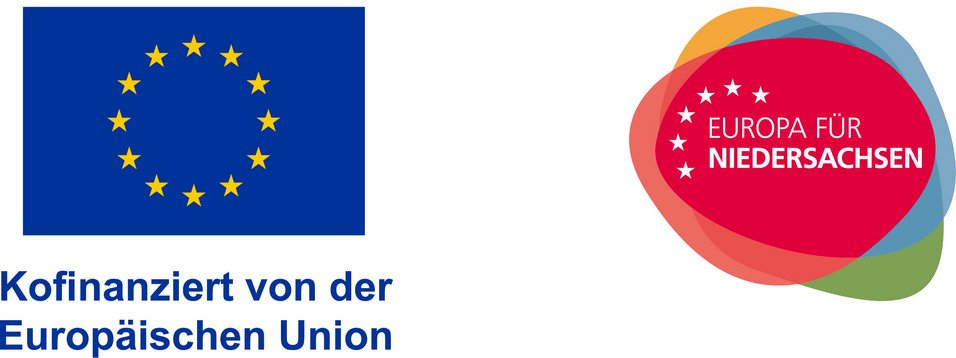
ML4E: Machine Learned Models for Engineers
Ernst-August-Grubenwassermonitoring (EAGruMo)
The Ernst August Mine Water Monitoring (EAGruMo) project is dedicated to the long-term preservation of water quality and availability in the Harz Mountains, a crucial region for northern Germany's water supply. Due to the challenges posed by climate change and the increasing water requirements of the surrounding industries, the innovative use of the Ernst-August-Stollens as an underground water reservoir was investigated. In order to determine the potential of this gallery and other historical mining structures, the project is divided into three main areas: the development of a mobile multi-sensor system for water exploration, the creation of hydrological and hydrogeological models and the introduction of a continuous water quality monitoring system.
Within the EAGruMo project, the ISSE is involved in several key areas. In the work package "Development of a mobile multi-sensor system (MSS) for spatial and qualitative water exploration", ISSE's main focus is on developing an AI-controlled autonomous navigation of the MSS using the end-to-end learning approach. This control method will be tested in virtual and real laboratory environments as well as in the Ernst-August-Stollen. Within the work package "AI-based prediction of measured values", the ISSE is looking for ways to use virtual sensors to generate measured values between the MSS inspections using artificial intelligence methods and to accelerate the hydrological simulation models from the sub-projects of the other partners for real-time predictions. The hybrid model approach is used for this. The AI is not only data-based, but also tared on the basis of known laws of the engineers and thus limited to physically plausible forecasts.
Project website: https://www.eagrumo.tu-clausthal.de/
Contact person: Dr. Stefan Wittek
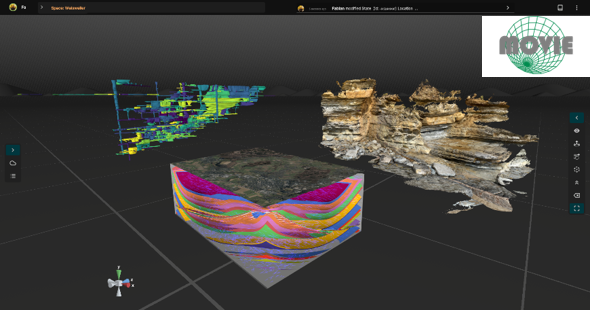
Model coupling in the context of a VIrtual underground laboratory and its development process (MOVIE)
In the area of underground management, previous simulation models have considered individual aspects such as geology, cavity geometry, weather technology/flow mechanics and geomechanics separately. However, a more comprehensive model coupling enables a more holistic analysis of the system interrelationships and the interdependencies between the models. As part of the MOVIE project, a hybrid model is being developed using artificial intelligence in order to optimize the computing time for these simulation models and enable interactive use in the virtual laboratory. A retrospective simulation approach is used in which the forecasts based on historical data are compared with current measurements from the real underground laboratory. The resulting difference is used to fine-tune the model.
Project partners: Freiberg University of Mining and Technology - Institute of Mining and Special Civil Engineering, Research and Training Mine (FLB) "Reiche Zeche"; fibrisTerre Systems GmbH (Berlin), Terranigma Solutions GmbH (Aachen) and other partners at Clausthal University of Technology: IGMR-Geomatics, IGMR- Underground Mining, IGMR-Geomechanics, IGMR-Geology
Project website: https://www.igmr.tu-clausthal.de/department-of-geo-engineering/geomatics-for-underground-systems/forschung/movie
Contact person: Dhananjeyan Jeyaraj
NFDI4Ing - National Research Data Infrastructure for the Engineering Sciences
NFDI4Ing unites the engineering research communities and promotes the management of their research data. The consortium represents researchers from all engineering disciplines. It offers a unique method-oriented and user-centered approach to make research data FAIR - findable, accessible, interoperable and reusable.
NFDI4Ing defines a total of 7 archetypes for scientists as users of research infrastructure. The ISSE is mainly in the BETTY archetype: research software by engineers. This includes in particular the code of simulation models, and questions regarding the integration of heterogeneous models, as well as their approximation with the help of AI methods.
Contact person: Vasiliy Seibert
KI4All
The aim of this project is to develop subject-specific and interdisciplinary study and learning content on artificial intelligence, particularly in the field of machine learning, for all status groups in universities and to promote their use at universities.
universities and to enable their use across universities by external stakeholders (i.e. interested members of the public). An AI hub will be established as a decentralized platform for these coordinated development activities, which will enable coordinated development and usage planning as well as the implementation of didactically sound and innovative learning and teaching concepts of methods and application-oriented tools in the context of data-driven modelling, analysis and simulation for different target groups and promote AI-based innovations through participatory formats.
Contact person: Stefan Wittek
Drink Extreme
The aim of the research project is to develop methods, precautionary concepts and transferable practical tools for extreme events for water supply companies and the water management administration. The project addresses key areas of water supply, from water extraction and treatment to operation and water use, as well as the different types of raw water - groundwater, spring water and surface water. An exemplary implementation takes place in representative model regions of the German long-distance and surface water supply. This allows other long-distance and surface water suppliers or local water suppliers to adapt their various local requirements in a practical manner. Ultimately, the project is also intended to provide impetus for setting regulations, e.g. for risk management and for cooperation with state authorities in extreme situations. The project also aims to raise awareness of the challenges of water supply during extreme events. Modern public relations work is intended to sensitize both water supply companies with comparable challenges and interested end customers to the topic of extreme events and to demonstrate the possible solutions developed in the project.
Contact person: Sakshi Singh
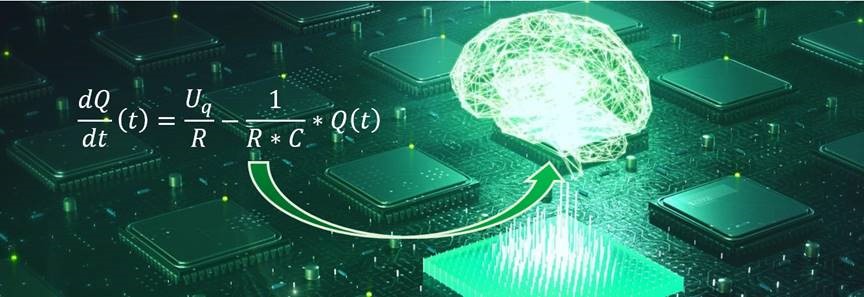
CircularLIB
This project is part of the CircularLIB research training group on the cycle-oriented production of lithium-ion batteries. In this program, the three universities TU Braunschweig, TU Clausthal and Leibnitz University Hannover are cooperating with the Fraunhofer Institute for Surface Engineering and Thin Films IST.
The aim is to research a hybrid AI-based modeling approach for lithium-ion batteries. Recently, machine learning has also been increasingly used in the context of traditional engineering disciplines. Deep learning approaches in particular offer fast and relatively accurate modeling approaches based on learning specific tasks from examples. This is of particular interest in the context of high-dimensional complex systems where the underlying physics is not fully known or the computational effort required for simulation using conventional numerical methods is high. Another aspect that promotes the use of deep learning approaches is the need for fast models that can be used in iterative tasks such as optimization and control. However, data-driven models are usually black-box approaches that are developed based on data only and do not explicitly incorporate physical knowledge or constraints into the model development. This can result in such models lacking robustness and accuracy, especially with limited training data.
Recent advances in the field of physically informed machine learning have led to a number of approaches that are well suited for solving various types of partial differential equations (PDEs). This project aims to develop models based on both data and available physical knowledge for lithium-ion batteries using physically informed machine learning techniques that allow a hybrid AI-based modeling approach.
Contact person: Hamidreza Eivazi Kourabbaslou